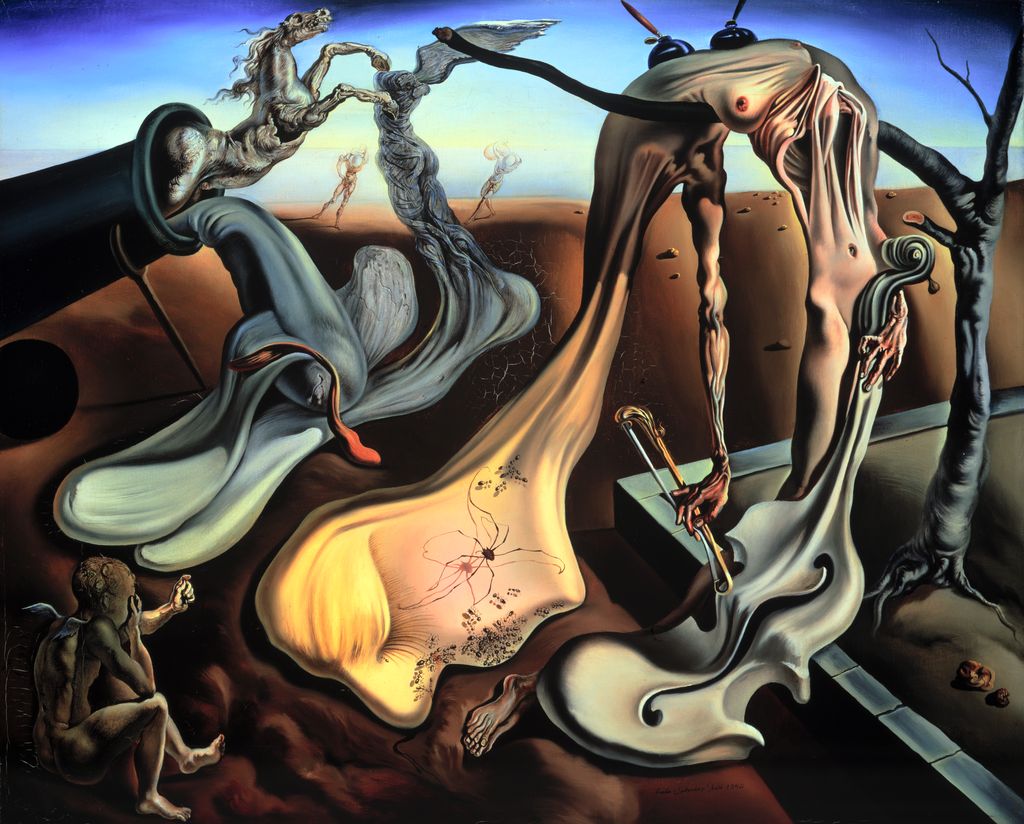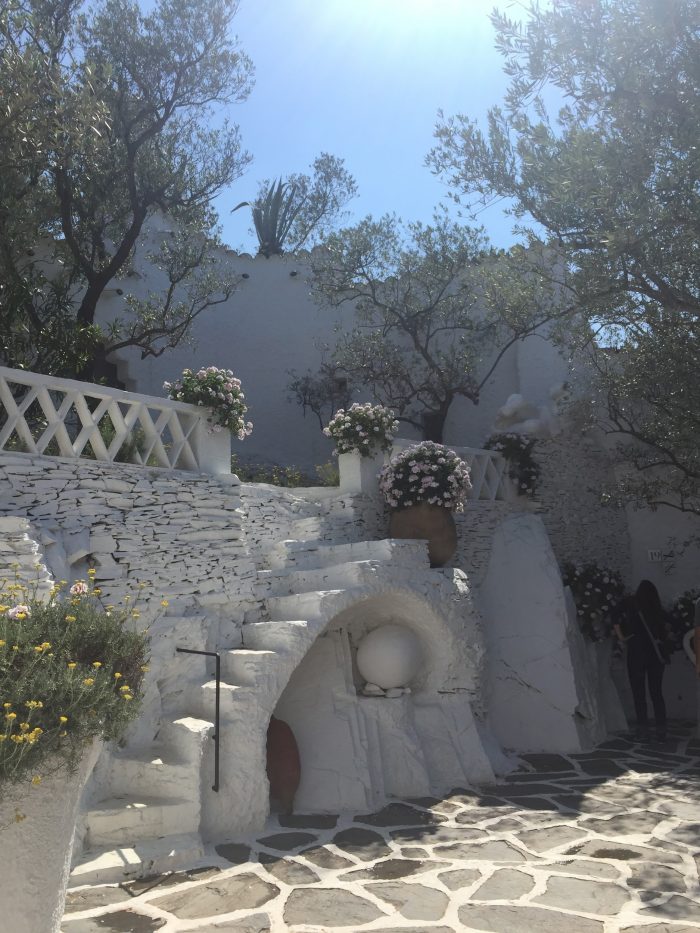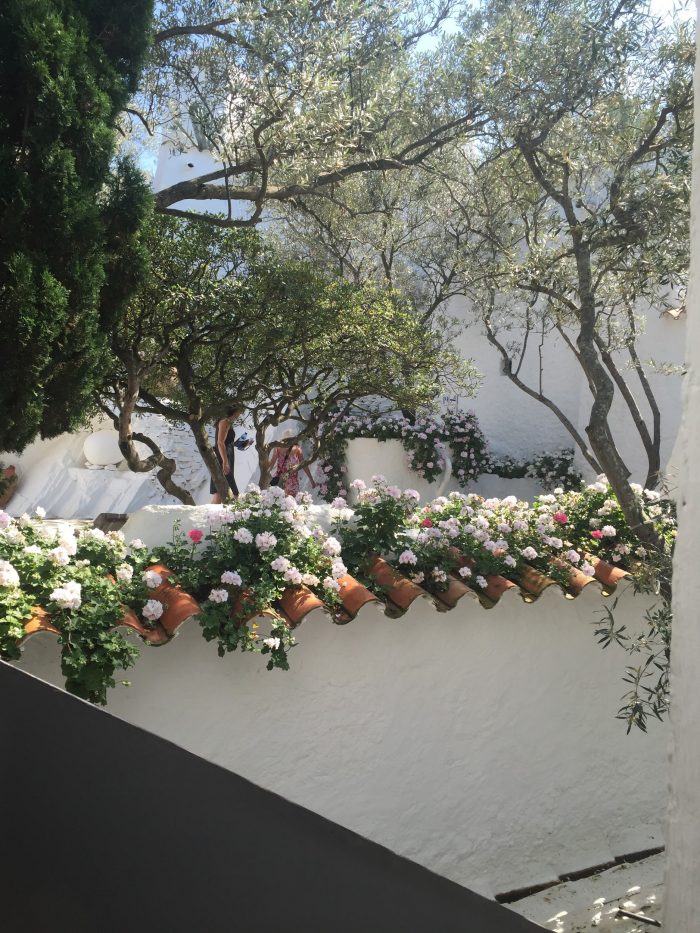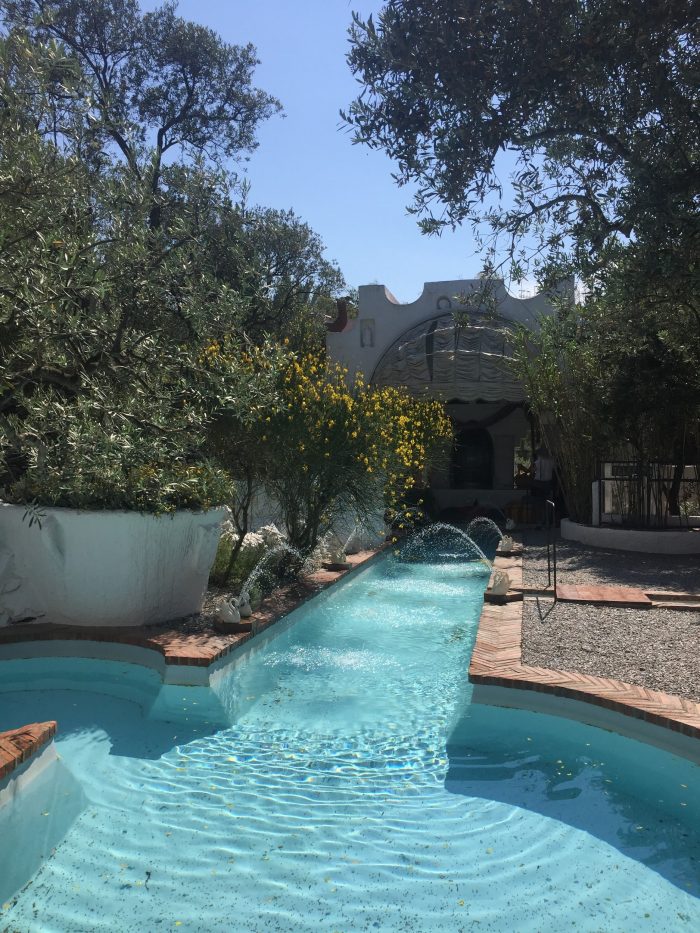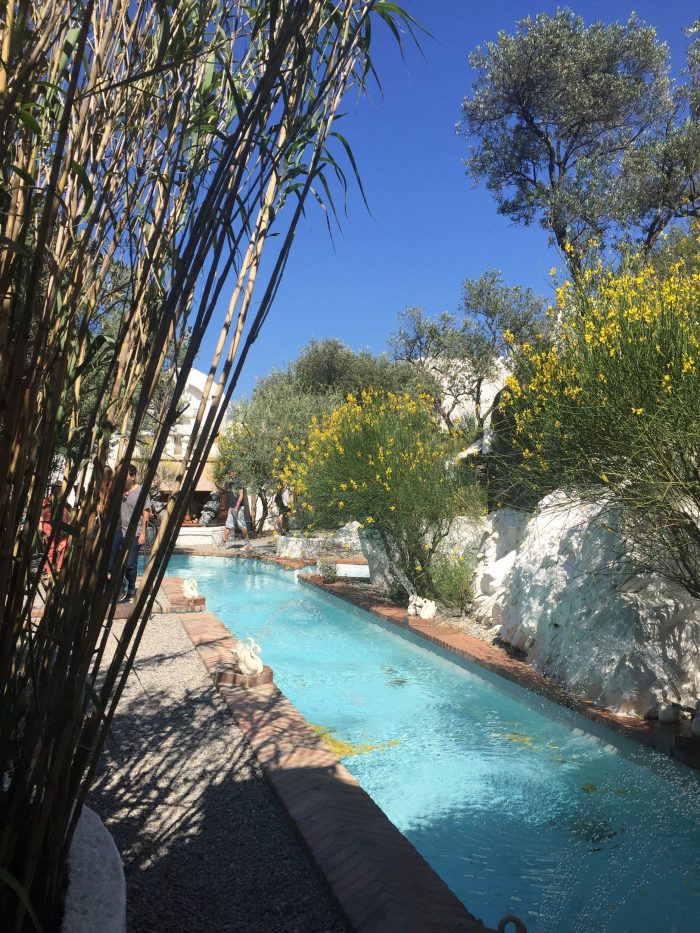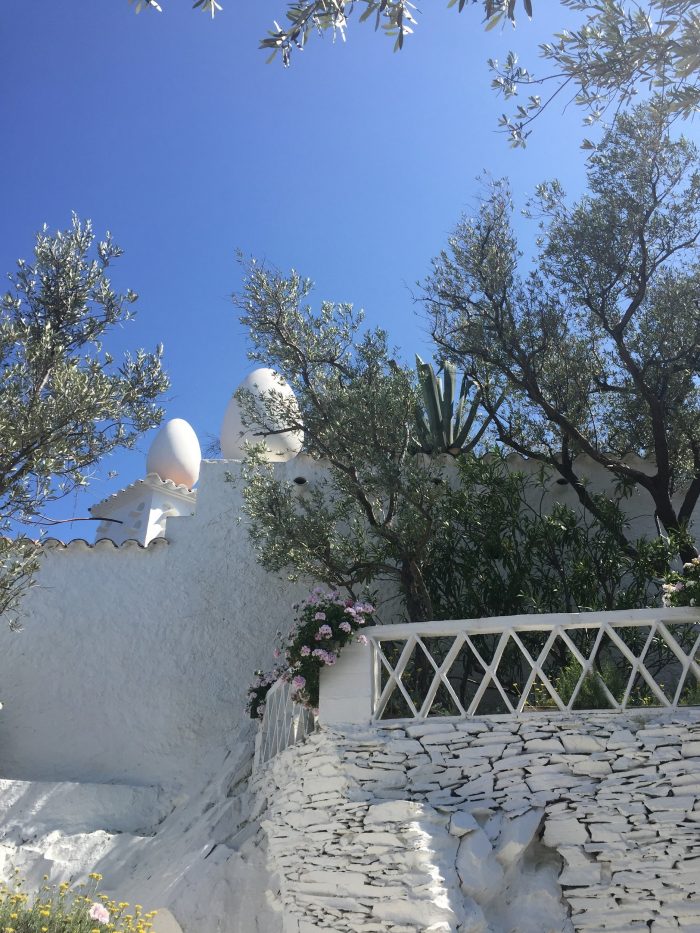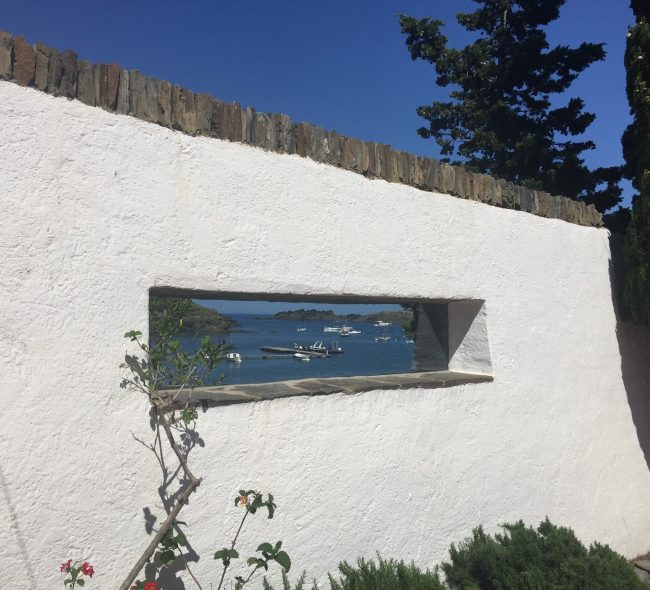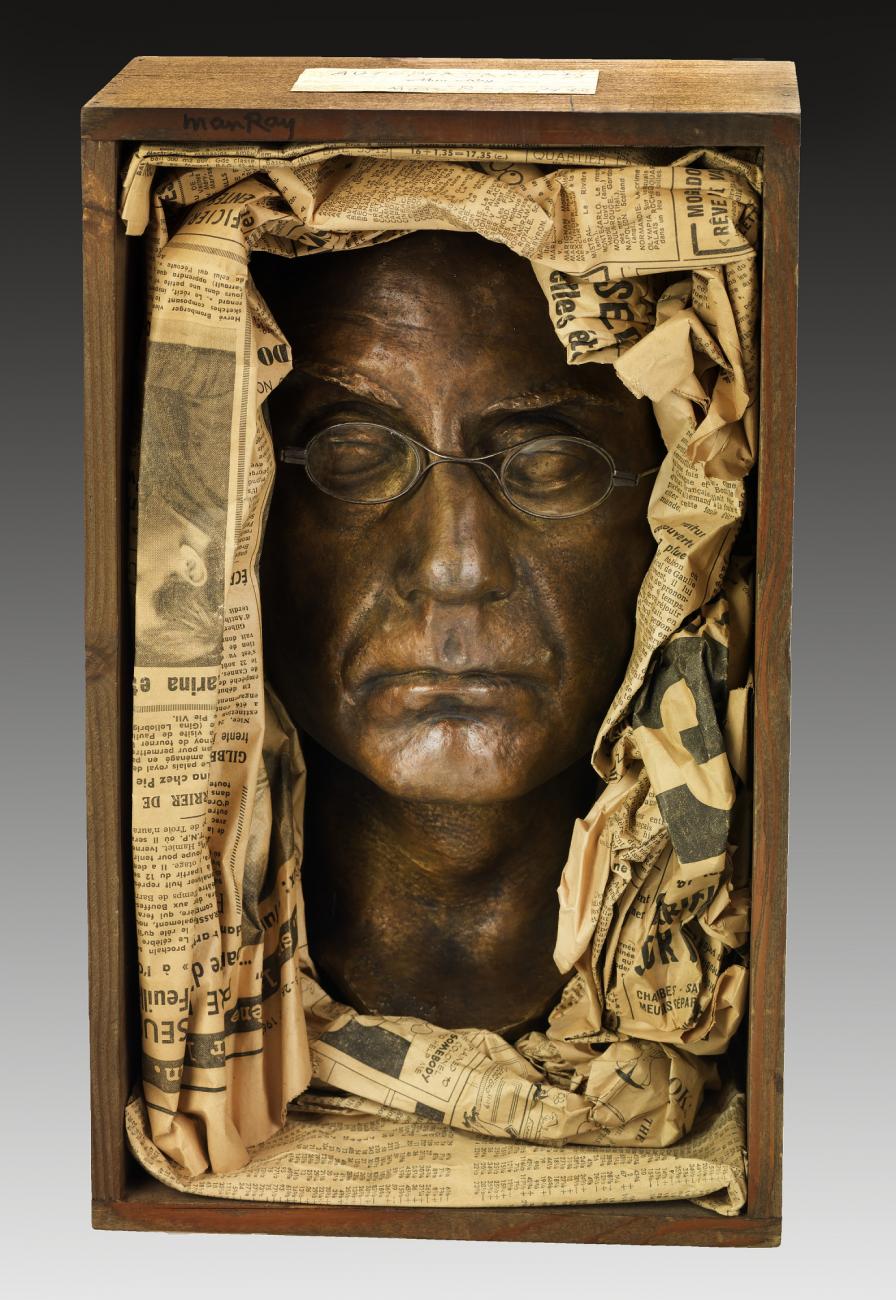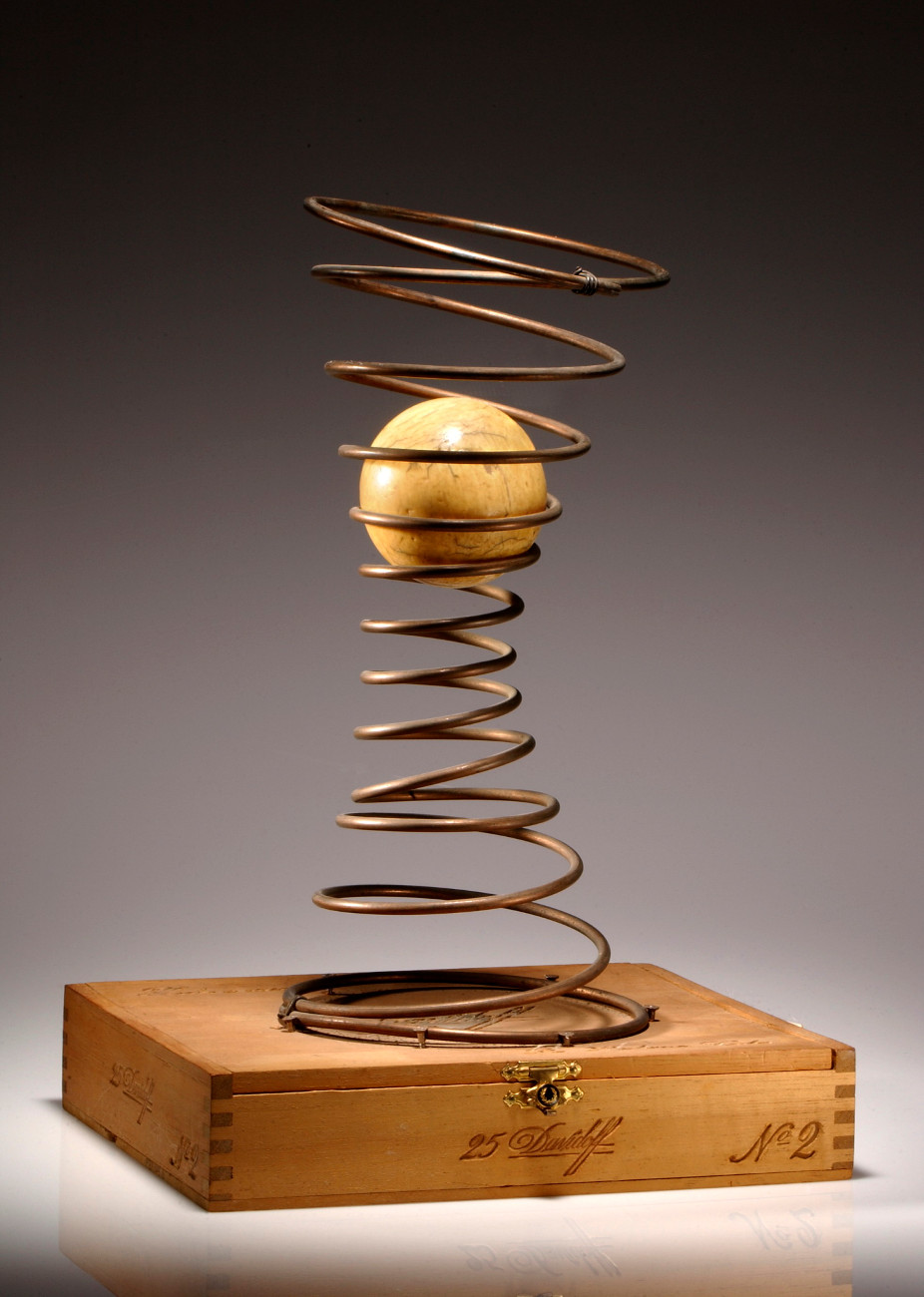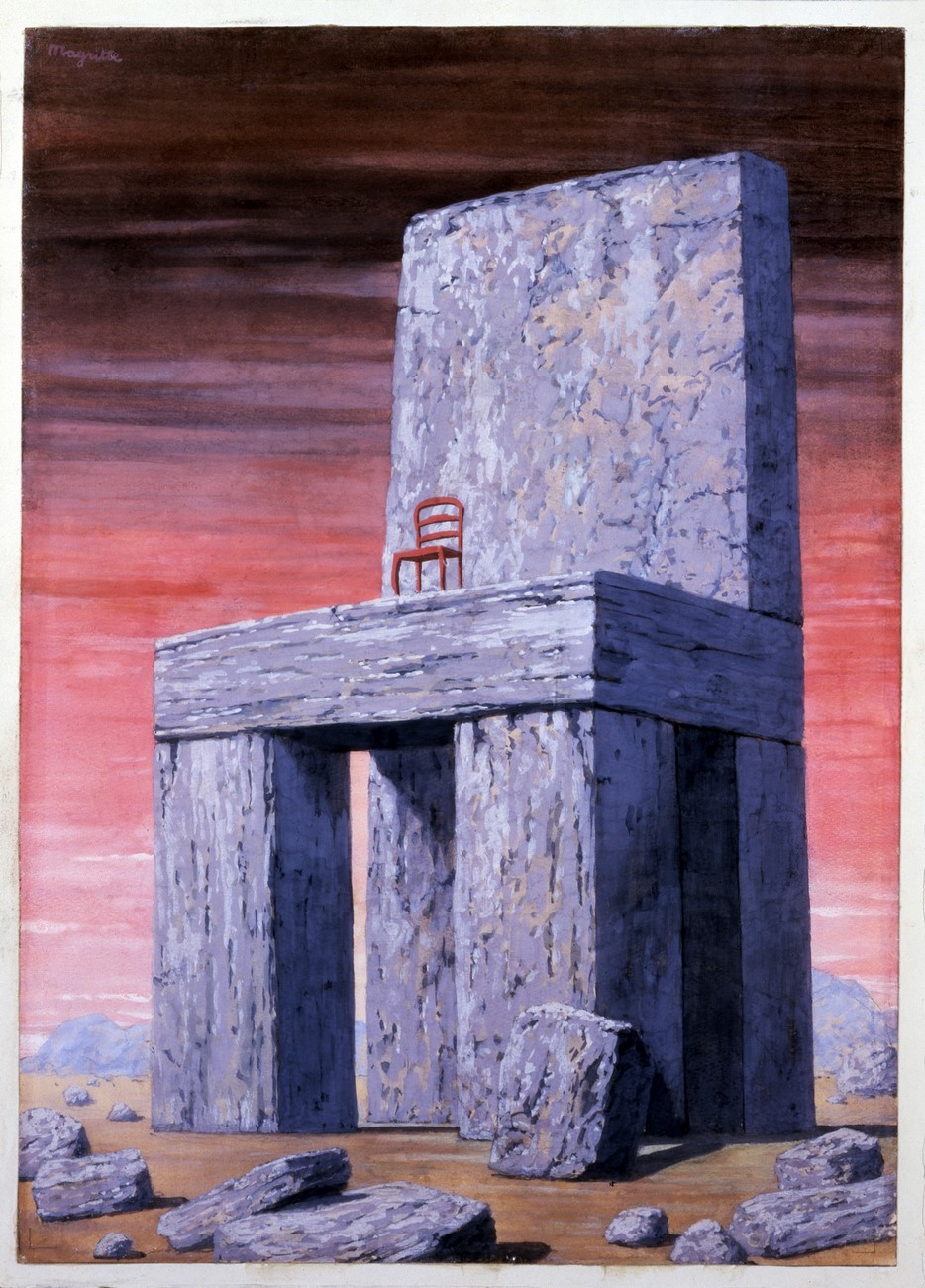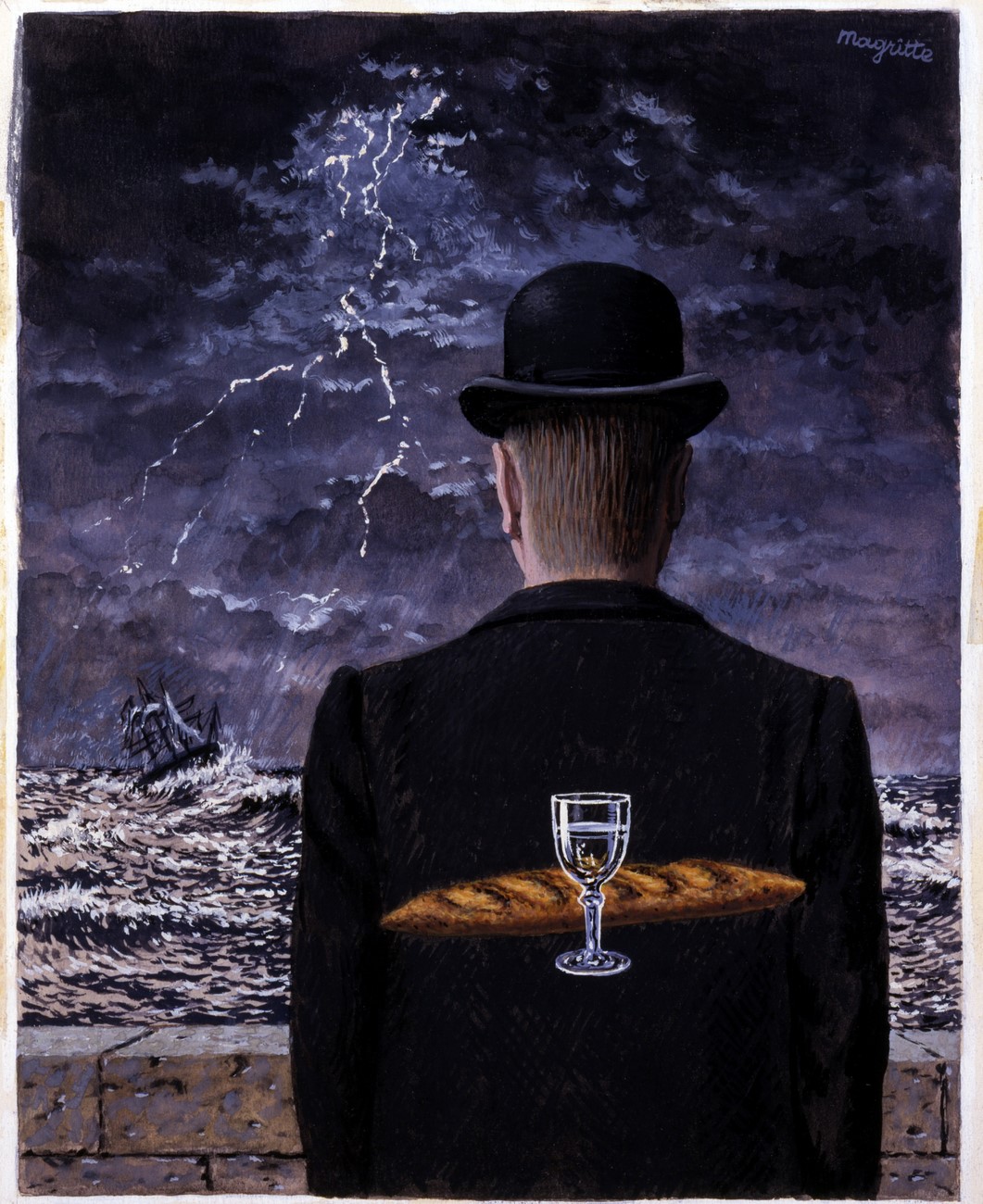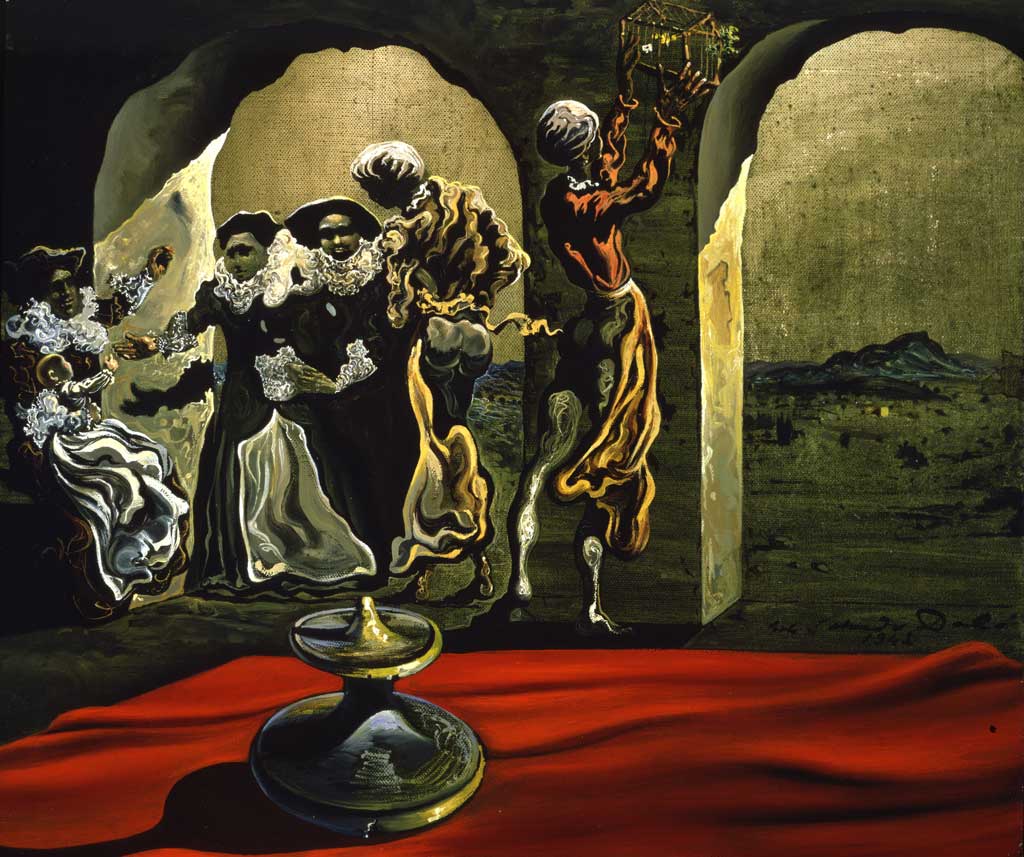You can also listen to this article in the voice of own Plastic Artist Rosângela Vig:
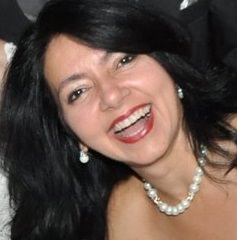
When I look at the starry sky, I find it small.
Maybe it was me who grew up, or it was the universe that shrank.
Unless both heppened at the same time;
(DALI, 2008, p.18)
True Art opens its doors when it unleashes from logic and reality and approaches to the field of dreams. Perhaps this is the way the mind can unimpeded ramble through its ways, without the bonds that the real world imposes. Apart from the harshness of life, at this moment, Aesthetics approaches to the utopian universes. Teading through these places is like flying over unimaginable immensities and drawing an uncertain destiny to them. The soul transcends then, at this moment, taking flight by spaces that can only be reached by the hands of Art.
The Aesthetics of the first decades of the 20th Century had this essence, by the hands of the Dadaists and the Surrealists. Disengaged from logic, the artificer looked for ways never before imagined, leading the viewer, to feel the illogical and the incoherent. Under this concept, Dadaism began, as a short movement in which artists portrayed the absurd. As a reaction to the massacres of World War I (1914-1918), the Dadaists opposed orthodox artistic conventions, as was the example of Marcel Duchamp's Fountain 1, under the concept of "ready-made". The idea was an Art without meaning, in a society without meaning. Were part of this style the artists Marcel Duchamp (1887-1968), Francis Picabia (1879-1953) and George Grosz (1893-1959).
Surrealism absorbed this movement in the 20, portraying a reality closer to unreal, a kind of fantasy state, in which it would be possible to explore new perspectives. The publication of the Surrealism Manifest, in 1924, by the writer André Breton (1896-1966) marked the beginning of the movement which backgrounds were the studies on the unconscious by Sigmund Freud (1856-1939).
Freud himself was not sympathetic to Surrealism, since psychoanalysis saw the interpretation of dreams as a way of understanding and healing of his patients; while the surrealists perceived the dream world as a fertile field of artistic images.
And it is possible to understand that the events of the period excited the surrealist minds. The Spanish Flu (1918), which killed almost 50 million people; the transmission of the first television image, in England in 1925; and the beginning of World War II, in 1939, stimulated the creativity and aesthetics developed then.
Architecture
It is in Architecture that we can admire the deep shock, in its most consubstantially functionalist essence, in every "element", even though it is the most congenital, the most hereditary of the past. With the Modern Style, the architectural elements of the past, besides being subjected to the frequent, to the total convulsive-formal crunch that will rise a new stylization, it will be called to revive, to subsist now under its true original aspect, so, when they combine with one another (…) they will attain the highest degree of aesthetic depreciation, they will manifest in their relations that terrible impurity only possible and equal in immaculate purity of the dream.
(DALI, 2008, p. 47)
The architect's gaze is that of an artist. He interprets the incessant desire that fantasy materializes. His mind sometimes becomes undisciplined, but it overcomes limits and transcends, as the whims of imagination. And imagination was the most present element in Surrealism. It opened the fields so that Architecture would go beyond these utopian boundaries wildly.
It can be said that there wasn’t only one Surrealism in Architecture, but a significant variation of concepts geared more to the satisfaction of the desires of thought, than to formalism and functionality, making clear there was a consonance of opinions between artists and architects. Dali's dream elements were fundamental not only to the works of Frederick Kiesler (1890-1965) and Frank Gehry 2 (1929-), but inspired the later productions.
One of the best known architects of our time, Canadian Frank Gehry realized the character of these dreamlike worlds and translated them. The Guggenheim Museum, in Bilbao, Spain is one of its well-known buildings and it can be considered itself a work of Art, for its exuberance. The museum is one of the most beautiful in the world and its undulating forms resemble the opening petals of a silver-colored flower. The architect projected the Walt Disney Concert Hall 3, which took 16 years to complete. The building is full of ripples and stands out amidt the rectilinear buildings of the great metropolis. Its sinuous lines and silver color resemble those of the Spanish museum.
Salvador Dali himself thought and designed the Salvador Dali Theater-Museum 4 and the house where he lived, in his hometown in Catalonia, Spain. Located in the small village of Cadaqués, bathed by the Mediterranean, in the Salvador Dali's House 5 and was where the artist lived for many years until the death of his wife. Well lit and overlooking the sea, its interior is filled with small details such as sculptures, chandeliers and peculiar decorative objects that seem to come from the artist's canvases. all white, full of flower beds and flower pots (Fig. 2), the outside of the property counts with a terrace (Fig. 1) and a vertical pool (Figures 3 and 4). Amidst the surrealistic elements, Dali added the famous egg-shaped scuptures, also present in other of his works, which meaning is that of fertility, creation and purity. For Dali,
It is, therefore, a question of making a habitable construction (and also edible, in my opinion) with the reflections of the crepuscular clouds in the waters of a lake, the work must also include, in addition, he maximum of naturalistic rigor and trompe l’oeil respectively 6. I proclaim that this is a gigantic progress on the simple Riembaudian submersion of the Hall at the bottom of a lake.
(DALI, 2008, p. 61)
The imagination loses itself along with Dali’s, as he traverses his texts, his works and his admirable worlds. It is quite possible that many of the scenes he created came from the house where he lived, with its objects, its gardens and its decoration. And it is not difficult to be enchanted by these places and with the bold of images that persisted in his constantly productive mind. His works transcended painting and materialized in the house where he lived. At the same time, his house served him as inexhaustible source of inspiration for his production.
1 Link to the work The Fountain of Marcel Duchamp:
www.youtube.com/watch?v=ENoB2b1Nd1Y
2 Link to Frank Gehry’s works:
www.youtube.com/watch?v=dA_KfO0Vdi4
3 Link to Walt Disney Concert Hall:
www.youtube.com/watch?v=ViCYciMxg0s
4 Link to the Theater-Museum Salvador Dali:
www.youtube.com/watch?v=hQPsGWIScoQ
5 Photos of Salvador Dali’s house from Achtrends Portobello, by Barbara Cassou:
archtrends.com/blog/arquitetura-surrealista-conheca-casa-de-praia-de-salvador-dali
6 The expression trompe l'oeil vfrom French and means to deceive the look. The technique is frequently used in Painting, to promote illusory effects of three dimensions, through perspective, light and shadow. Link to the website of the Trompe L'Oeil Museum:
www.museedutrompeloeil.com
Sculpture
The least you can ask a sculpture is that it does not move.
(DALI, 2008, p. 47)
The paths that take the soul travels through the tenuous line of dreams are formidable. The whole body lets itself become numbed by the hypnotic power that snatches and the mind is detached from the real world. The soul takes flight to unexplored dimensions and through them they drift away. The surrealist aesthetic allowed the soul this journey that also passed through the field of Sculpture.
The English millionaire Edward James (1907-1984) seems to have walked through these worlds and printed in his garden, in the mountains of Mexico, in the city of Xilita, state of San Luis Potosí. Poet, sculptor, sponsor and collector of Surrealist Art, the magnate himself sold the works of his collection to build an immense concrete work. His version of the Garden of Eden began in 1949 and continued until his death in 1984, with much of the work unfinished.
Opened for tourism since 1991, Las Pozas 7, 8 is like a portal to surreal universes with pilasters that stand balanced in the middle of the woods, as if competing with trees in size. Sometimes flowers bloom from their tips, at high; sometimes gothic arches emerge among the pilasters, crossing and dividing spaces with spiral staircases, ramps, bridges, steps and narrow passages that rise and descend in sinuous lines, leading to indefinite places that only in the world of dream are possible. As if opening a gateway to Eden, the immense sculpture garden still holds paths on the ground, with waterfalls, and natural pools on its 40 hectares.
In Las Pozas the Architecture, Landscaping and Sculpture talk and often blend themselves. Sprouting from the floor and from the immense green wall, it seems that the fountains, flowers and concrete animals have always been there and are in constant motion. It is not hard to imagine that by waving his wand, a fairy might one day have turned her magic to bring up one by one, stairways, bridges, ramps and passages. In 2007, Pedro y Elena Hernández Foundation, together with a construction materials company and the state government of San Luis Potosí created the Xilita Foundation, to take care and to preserve the site.
Some artists may have aroused amazement, as Man Ray (1890-1976), with his Self-portrait (Fig. 7). The bronze sculpture, inside a box, protected by glass, is the artist's own face, with glasses, with his eyes closed, wrapped in newspapers. The artist's other work (Fig. 8) consists of a spring with a wider upper and lower part. The narrowest center has a white ball that seems to struggle down the gap, or it may have got stuck in the spring rings. Also in bronze, the Fisherman's Idol (Fig. 9) seems to protect him at work, as a lucky charm. The figure, made up of geometric shapes, resembles a standing human figure.
Other important sculptores can be mentioned, such as Alberto Giacometti (1901-1966), Hans Arp (1887-1966), Hans Bellmer (1902-1975) and Max Ernst (1891-1976). And it is not difficult to analyze the works of Surrealist Architecture from the point of view of enormous sculptures due to their peculiar and daring forms. It is as if the areas blended their properties, like Frank Gehry’ buildings. Surrealism did not preserve the imaginary worlds, did not cover them up, but instead, disclosed and exposed them, daring, and reaching the perfection of the oniric worlds of artists.
Surreal is only the reality that hasn’t still been disconnected from its own mystey.
(René Magritte in MACK, 2014, p. 341)
7 Link to Las Pozas, in Mexico:
www.youtube.com/watch?v=L6V2MFfqiZ0
8 Link to Las Pozas, in Mexico:
www.youtube.com/watch?v=BLcsOeiadls
Painting
The painter is not someone inspired, but someone capable of inspiring others.
(DALI in KLINGSÖHR-LEROY, 2007, p.25)
Fantasy is a whim of dreams, The artist goes up to it and provokes the spark, opening the doors to delirious worlds. The purpose of Surrealist Art is to reach these universes that only the imagination is capable of engendering. The spectator’s is to enter this portal, loosening the knots of reality, letting himself to be taken in a free enjoyment. Painting has gone through these paths of utopia in an extraordinary way.
Surrealism toured the work of the Belgian artist Magritte (1898-1967), with a deep content, suggesting not only illogical scenes, but presenting a reflexive content. In figure 10, there are two chairs with different conceptions. The one at the top is made of dark wood, its legs and back slightly arched; the one at the bottom, was carved in stone and has simplified and straight forms. Around it, on the ground, there are remains of the stone used to carve the largest chair. The upper one is modern and the lower one may have been carved in antiquity, due to the simplicity of its form. However the function of both is to serve as a place to sit.
The artist also painted the image in which a ship seems in trouble in the midst of a storm, on the high sea, at night (Fig. 11). At the same time, protected by a wall, the man back, well dressed seems to enjoy the scene, without attitude. There is bread and a cup painted on his back whats suggests that the boat may not matter to him, his concern can be regarding to food.
And perhaps there was no artist with such an inexhaustible source of inspiration as Salvador Dali 9,10,11 (1904-1989). His uncertain worlds, soft, fluid and freakishly fantastic worlds seem delusions in full lucidity. In the midst of a chaotic scene (Fig. 12), a horse emerges from a cannon in despair, and an airplane melts. The woman who plays the violin is dissolving with her instrument. Her body is hanging on the branches of a parched tree and the ants are eating her face on the ground. A spider passes by the ants and an angel cries at the left bottom of the image. The work portays the horrors of a conflict, and was the first one made by the artist during the time he lived with his wife Gala, in the United States, between 1940 and 1948, fleeing the war, in Europe.
The genius of the artist still printed two images in a single scene (Fig. 13). The missing bust of philosopher Voltaire (1694-1778) can be seen amidst the slave market, outlined by the openings of walls and the body of the people. The faces of the merchants correspond to the eyes of the disappeared statue; the clothes shape the neck and lap; and the candle holder is the pedestal of the sculpture.
Full of movement, strong colors, contrasting and sinuous shapes, Joan Miró’s images 12 (1893-1983) show fantastic and bucolic worlds. His Tilled Field 13 show animals of a farm everywhere and flee from the conception of reality. There is na ox, a horse, a cow with a calf, birds, a dog, a cat, a rabbit and even a snail. It is possible to recognize the plantation lit by the sun, the tree with one ear, its shadow on the ground and the little house in the center of the scene. The elements do not resemble real features like those of Dali's scenes. They are metaphorically poetic creatures and correspond to a world imagined by the artist.
Also dreamlike the worlds of Giorgio de Chirico 14 (1888-1978), contradicting the idea of urban spaces, as if the Classical and the Medieval were united, in a way exposing a new perspective to the field of Architecture. For Chilean surrealist painter Roberto Matta (1911-2002), "Painting always has a foot in Architecture, and a foot in dreams" (in KLINGSÖHR-LEROY, 2007, p.72). And it is possible that the viewer's mind is enchanted and transported to these worlds invented by Art.
Walked through Surrealism Pablo Picasso 15 (1881-1973), the greatest exponent of Cubism. For the artist, "if there was only one truth, it would not be possible to paint one hundred paintings of the same theme" (PICASSO in KLINGSÖHR-LEROY, 2007, p.86). Paul Klee 16 (1879-1940), whose work excelled in the fields of Expressionism and Cubism, also rambled on the surrealist traits.
To the soul is also allowed a reverie in the surreal worlds of André Masson (1896-1987), Max Ernst (1891-1976), Paul Delvaux (1897-1994), Wifredo Lam (1902-1982), and Yves Tanguy (1900-1955); and also in the paintings of the great surrealist women, Alice Rahon (1904-1987), Leonora Carrington (1917-2011), Marjorie Cameron (1922-1995), Meret Oppenheim (1913-1985), Remedios Varo (1908-1963) and the unforgettable Frida Kahlo 17 (1907-1954).
Maybe the free spirit has guided the creative mind through these imagined universes. For the Swiss surrealist, Meret Oppenheim (in KLINGSÖHR-LEROY, 2007, p.80), "Freedom is not offered, it has to be acquired". The artificer is the curious spirit caught up in these invented worlds. Free, he becomes charmed and lies through these stations.
Former painters used to be crazy and buyers of crafty paintings, the smart ones. Now the painters are smart and the buyers are crazy.
(CHIRICO in KLINGSÖHR-LEROY, 2007, p.34)
9 Link to Dali vídeo, with Portuguese subtitles:
www.youtube.com/watch?v=dUamdXDFP8k
10 Link to the Magritte Museum:
www.fine-arts-museum.be/fr/la-collection/artist/magritte-rene-1?string=magritte
11 Video about Dali’s works – 60 seconds in English:
www.youtube.com/watch?v=cdcTY5GhHuk
12 Link to Joan Miró’s exhibition in Brazil:
www.obrasdarte.com/joan-miro-a-forca-da-materia-instituto-tomie-ohtake
Sign up to receive Event News
and the Universe of Arts first!
13 Link to Joan Miró’s work The Tilled Field:
www.guggenheim.org/artwork/2934
14 Link Giorgio de Chirico’s works:
www.youtube.com/watch?v=y33fwSjKX6g
15 Link to Cubism:
www.obrasdarte.com/arte-moderna-cubismo-por-rosangela-vig
16 Link Paul Klee’s exhibition:
www.obrasdarte.com/exposicao-paul-klee-por-rosangela-vig
17 Link to Frida Kahlo’s exhibition:
www.obrasdarte.com/exposicao-frida-kahlo-conexao-entre-as-mulheres-surrealistas-no-mexico-por-rosangela-vig
Final Considerations
I AM not the clown, but this monstrously cynical and so unconsciously naive society, that plays the game of seriousness to better hide its madness.
(DALI in KLINGSÖHR-LEROY, 2007, p.36)
The artist acts with the tools that are offered to him, the white screen, the rough stone, the raw material. His spaces creates and become real on the way that the Art finds. The heart follows its own rule, the heart ordered, walks the aesthete's hands go through Architecture, Sculpture and Painting. And these three fields seem to have walked side by side in Surrealism, as never before, often confounding each other.
Dali's paintings materialized in his house, in his Theater-Museum; the sculptures of Las Pozas, are often embedded in staircases and pilasters; the universes of Giorgio de Chirico can be inserted into the plan of an exceptional architect. The classical reality here has been taken up and modified to a super reality of enchantment. The ensemble completed when the works were embedded in the Dadaist concept, with of collages and the re-signification of everyday objects.
The surreal is like a state of fantasy for André Breton, but it is more than this to the look, it is a way of enjoying these images together with its creator. For Freud,
Art is the only domain in which the sovereign power of ideas has been preserved to this day. It is only in the Art that men tormented by desire can obtain as a satisfaction; and, thanks to the artistic illusion, this game produces the same affective resuts that it would produce if it were something real. The magic of Art is rightly spoken, and the artist is compared to a magician.
(FREUD, 2005, p.84)
Although Freud was not a connoisseur of Surrealism, it is worth mentioning his way of thinking about Art. It is possible to traverse these worlds through it, to transcend and to be snatched from implacable reality. And perhaps the artists of the surreal aesthetic have managed as no one to guide the thought of the viewer and to lead to other surroundings, where there are no limits and no borders.
References:
- BANDEIRA, Manuel. Bandeira de Bolso, Uma Antologia Poética. Porto Alegre: L&PM Pocket, 2008.
- BAYER, Raymond. História da Estética. Lisboa: Editorial Estampa, 1993. Tradução de José Saramago.
- BYSTRINA, Ivan. Semiotics of Culture Topics, Classrooms Yvan Bystrina. PUC – SP,CISC (Center for Interdisciplinary Research in Semiotics of Culture and Media). São Paulo: PRE-PRINT. Translation Norval Baitello Júnior and Sonia B.Castino, 1995.
- CALVINO, Italo. Por que ler os clássicos. 2to. edition. São Paulo: Companhia das Letras, 1993. Tradução Nilson Moulin.
- CHILVERS, Ian; ZACZEK, Iain; WELTON, Jude; BUGLER, Caroline; MACK, Lorrie. História Ilustrada da Arte. São Paulo: Publifolha, 2014.
- COLEÇÃO FOLHA. Grandes Mestres da Pintura – Salvador Dalí. Folha de São Paulo. Translation of Martin Ernesto Russo. Barueri: Editorial Sol, 2007.
- DALI, Salvador. Libelo contra a Arte Moderna. Porto Alegre: L&PM Pocket, 2008.
- EAGLETON, Terry. A Idéia de Cultura. São Paulo: Editora UNESP, 2005.
- FARTHING, Stephen. Tudo Sobre a Arte. Rio de Janeiro: Sextante, 2011.
- GASSET, José Ortega y. The art of humanization. 5 to. Edition. São Paulo: Ed.Cortez, 2005.
- FREUD, Sigmund. Pensamento Vivo. São Paulo: Editora Martin Claret, 2005.
- GLANCEY, Jonathan. A História da Arquitetura. São Paulo: Edições Loyola, 2012.
- GOLDING, John. Modern Art Concepts. Rio de Janeiro: Jorge Zahar Editor, 1991.
- GOMBRICH, E.H. A História da Arte. Rio de Janeiro: Editora Guanabara, 1988.
- HAUSER, Arnold. História Social da Arte e da Literatura. São Paulo: Martins Fontes, 2003.
- KANDINSKY, Wassily. Olhar sobre o Passado. São Paulo: Livraria Martins Fontes Editora Ltda. 1991.
- KANT, Immanuel. O Belo e o Sublime. Pôrto: Livraria Educação Nacional Ltda. 1942.
- KLINGSÖHR-LEROY, Cathrin. Surrealism. Colônia (Germany): Taschen Gmbh, 2007. Distributed by Paisagem Distribuidora de Livros Ltda. Translation of João Bernardo Paiva Boléo.
- MEIRELES, Cecília. Espectros. São Paulo: Editora Global, 2013.
- PROENÇA, Graça. Descobrindo a História da Arte. São Paulo: Editora Ática, 2005.
The figures:
Fig. 1 – Salvador Dali’s Beach House. Photo: Bárbara Cassou, in Archtrends Portobello.
Fig. 2 – Salvador Dali’s Beach House. Photo: Bárbara Cassou, in Archtrends Portobello.
Fig. 3 – Salvador Dali’s Beach House. Photo: Bárbara Cassou, in Archtrends Portobello.
Fig. 4 – Salvador Dali’s Beach House. Photo: Bárbara Cassou, in Archtrends Portobello.
Fig. 5 – Salvador Dali’s Beach House. Photo: Bárbara Cassou, in Archtrends Portobello.
Fig. 6 – Salvador Dali’s Beach House. Photo: Bárbara Cassou, in Archtrends Portobello.
Fig. 7 – Man Ray, Autoportrait, 1933, mixed media: bronze, glass, Wood and newsprint, 5.6 x 21.1 x 13.7 cm, Smithsonian American Art Museum, Gift of Juliet Man Ray, 1983.105.2 .
Fig. 8 – Man Ray, It’s another Spring, 1961, mixed media: metal spring, ivory ball, and wooden cigar box, 29.5 x 20.2 x 16.8 cm, Smithsonian American Art Museum, Gift of Juliet Man Ray, 1983.105.6 .
Fig. 9 – Man Ray, Fisherman’s Idol, cast 1973, bronze, 41.4 x 12.0 x 12.0 cm, Smithsonian American Art Museum, Gift of Juliet Man Ray, 1983.105.7 .
Fig. 10 – René Magritte, "Those who cannot remember the past are condemned to repeat it." – George Santayana, The Life of Reason; 1905, From the series: Great Ideas of Western Man ca.. 1962; gouache and pencil on paper mounted on paperboard. 34.0 x 24.2 cm, Smithsonian American Art Museum, Gift of Container Corporation of America, 1984.124.194 .
Fig. 11 – René Magritte, “Though all the winds of doctrine were let loose to play upon the earth, so truth be in the field, we do ingloriously, to misdoubt her strength. Let her and falsehood grapple; who ever knew truth put to the worse in a free and open encounter?” – John Milton Areopagítica, 1644; From the series: Great Ideas of Western Man ca., 1962; 1958, gouache on paper mounted on paperboard, 23.4 x 19.0 cm, Smithsonian American Art Museum, Gift of Container Corporation of America, 1984.124.195 .
Fig. 12 – Salvador Dali, Daddy Longlegs of the Evening Hope!, 1940, oil on canvas, 40,64 cm x 50,8 cm, The Dalí Museum, Present of A. Reynolds & Eleanor Morse. Copyright: Worldwide rights ©Salvador Dalí. Fundación Gala-Salvador Dalí (Artists Rights Society), 2017 / In the USA ©Salvador Dalí Museum, Inc. St. Petersburg, FL 2017.
Fig. 13 – Salvador Dali, Disappearing Bust of Voltaire, 1941, oil on canvas, 45,8 cm x 53,34 cm, The Dalí Museum, Present of A. Reynolds & Eleanor Morse. Copyright: Worldwide rights ©Salvador Dalí. Fundación Gala-Salvador Dalí (Artists Rights Society), 2017 / In the USA ©Salvador Dalí Museum, Inc. St. Petersburg, FL 2017.
You might also like:
- First Traces of Modern Art – Abstract Expressionism in Brazil by Rosângela Vig
- First Traces of Modern Art – Expressionism in Brazil by Rosângela Vig
- Modern Art – Abstract Expressionism by Rosângela Vig
- First Traces of Modern Art – Impressionism in Brazil by Rosângela Vig
- Modern Art – Abstractionism by Rosângela Vig
- Modern Art – Cubism by Rosângela Vig
- Modern Art – Expressionism by Rosângela Vig
- First Traces of Modern Art – Symbolism by Rosângela Vig
- First Traces of Modern Art – Post-Impressionism by Rosângela Vig
- First Traces of Modern Art – Impressionism by Rosângela Vig
- Romanticism in Brazil by Rosângela Vig
- Romanticism by Rosângela Vig
- The Neoclassical Art in Brazil by Rosângela Vig
- The Rococo in Brazil by Rosângela Vig
- The Neoclassical Art by Rosângela Vig
- Rococo by Rosângela Vig
- How appears the Surreal Work by Rosângela Vig
- The Baroque in Brazil by Rosângela Vig
- Baroque by Rosângela Vig
- Mannerism by Rosângela Vig
- Flemish Art – Renaissance in Northern Europe by Rosângela Vig
- Renaissance by Rosângela Vig
- The Contemporary, A little about the Urban Art by Rosângela Vig
- The Naive Art – Ingénue Art by Rosângela Vig
- Middle Ages, Byzantine Art by Rosângela Vig
- Middle Ages, Romanesque Art and Gothic Art by Rosângela Vig
- The Roman Art by Rosângela Vig
- Greek Art, Art History in Ancient Greece by Rosângela Vig
- The Egyptian Art by Rosângela Vig
- The Prehistoric Art by Rosângela Vig
- The beauty Art and the sublime Art by Rosângela Vig
- The Game of Art by Rosângela Vig
- The Misunderstood Art by Rosângela Vig
ROSÂNGELA VIG
Sorocaba – São Paulo
Facebook Profile | Facebook Fan Page | Website
Columnist at Website Obras de Arte
E-mail: rosangelavig@hotmail.com

